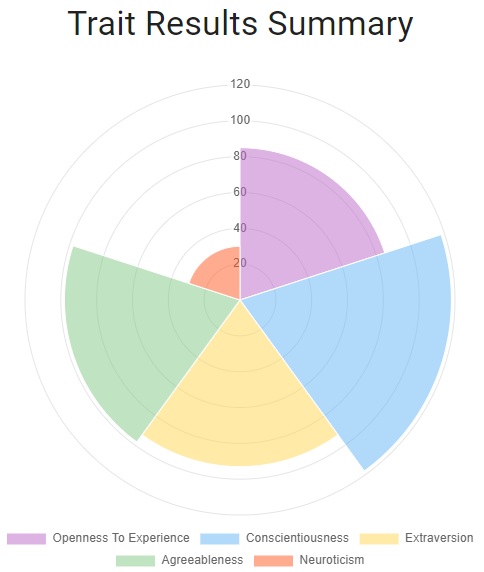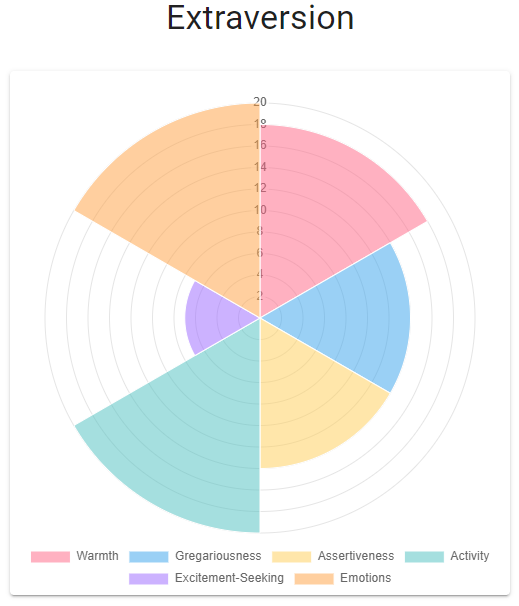Bite the Bullets (A quick summary if you don’t want to read the whole article)
- Personality types are high level summaries of combining personality trait details
- Personality traits are categories of tendencies
- Personality facets are sub-categories of each trait, and where the deepest insights are found
Savor the Summary
The world of personality information is like an onion with many layers. The first thing you see is the skin, but to get the most out of an onion you need to remove the skin and chop it into smaller, edible pieces. Maybe pushing this analogy too far, “personality types” are the skin on the onion, “personality traits” are the thick layers you see when cutting an onion in half, and “personality facets” are what you see when looking at a layer of the onion under a microscope.
Just like an onion, each layer of personality information has a purpose, and in this article we’ll go through what each layer is and how they can benefit you.
Personality Types
Personality types are the most commonly provided personality results on the internet. However, they are also the least useful and least relevant to you as someone who is trying to understand yourself and/or grow.
To start, your type is determined by first calculating if you score “high” or “low” in each personality category (meaning, if you score above or below the middle score in the range). The results of combining these “high” and “low” scores is your personality type. One problem with this approach is that many people score near the middle for at least one category, such as being extraverted versus introverted. While this result indicates that the person is equally extraverted and introverted, being provided results that say, for example, that they are only extraverted can be misleading and also just feel wrong.
The second reason that personality types aren’t the most helpful when trying to understand yourself is that they provide a simple overview of how you are when all parts of your personality are interacting. Meaning, it is an oversimplification that gives you something easy to grab on to, but is not likely to not be very accurate (e.g. multiple types may resonate with you).
This is great if it is ONLY used as a starting point of getting to know yourself. A high level summary is always nice to have before diving deeper into dense information. However, people often stop at this layer of information for a few reasons.
- They are satisfied with the results (given that they are vague enough to fit most people),
- They give up on personality because the results are inaccurate, or
- This is the only layer of information associated with the test they took (e.g. MBTI)
If you are looking for deeper, actionable insights, you’ll need to advance to the personality traits layer (at a minimum).
Personality Traits
Arguably the most scientifically backed way to understand your personality is through testing it using the Five-Factor Method (FFM or “Big 5”). This method tests you on five personality traits and lets you know how you “score” with respect to each trait (see “Trait Results Summary image below). For example, “the more of a trait people have, the more likely they are to show the behavior it disposes toward, and thus the more frequently we are likely to see it” (25).

As opposed to how types toss you into either the “high” or “low” score bucket, traits are typically scored with respect to the population. For example, while your type results may simply say “you are extraverted”, your trait results may reveal that you are “more extraverted than 53% of the population.” While both are technically true, the trait results provide more precision regarding the magnitude to which you express different parts of your personality.
Beyond the score, the results text for traits are commonly provided in three buckets instead of two: “low”, “neutral”, and “high”. While this may seem like a subtle difference, the “neutral” bucket gives people in this group significantly more accurate results and recommendations as compared to being told they are purely “high” or “low.”
But even personality traits have their limitations, and this is where facets come into play.
Personality Facets
While traits are a layer deeper than types, people are often underwhelmed by both of these layers. For example two friends, Steve and Germaine, may score 75% in extraversion but they behave very differently in social settings. This isn’t because the trait results are inaccurate. Rather, it is due to each trait having multiple aspects (also known as facets), and the friends differ in those aspects.
In Steve and Germaine’s case, extraversion is most commonly associated with being socially outgoing. However, this is only one aspect of extraversion that is referred to as the “gregariousness” facet. Another common facet of extraversion is “warmth,” which defines how friendly and intimate someone is. So although they have the same trait scores, Steve may score higher in gregariousness and Germaine higher in warmth (see “Extraversion” image below).

Depending on the test you take, there are most likely between two and six personality facets per trait. Regardless, the facet level of detail is often where people begin to feel they receive the most accurate results and relevant recommendations.
Conclusion
The world of personality information is like an onion with many layers. Types are the skin, traits are the thick layers, and facets show you those layers under a microscope. While the most common type of personality test out there only provides the skin (MBTI), Sophonaut delivers the whole onion, providing more detail the deeper you go into the results.
Having this information has been proven to provide a few major benefits:
- Significantly improve the ability to develop habits that stick,
- Help people get the most out of their strengths, and
- Increase the quality of relationships.
If you are interested in getting on the fast track to achieving any of these benefits, check out our current program offerings which are built on top of our personality test.



